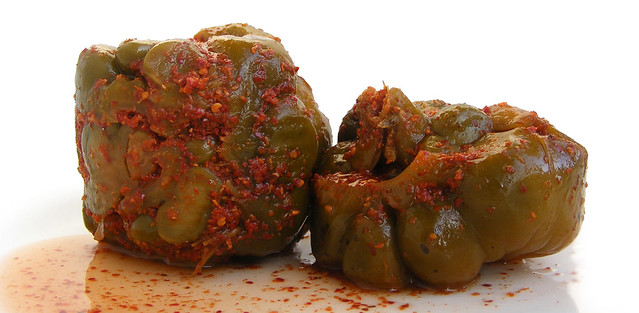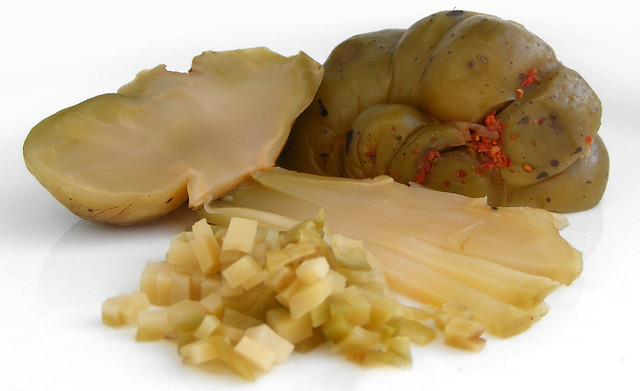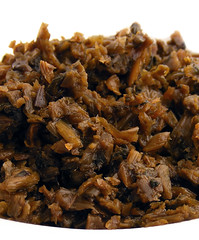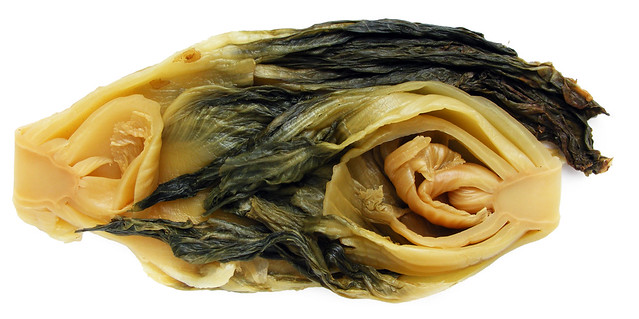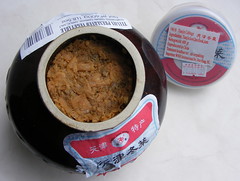 What’s it called?
What’s it called?
Tianjin preserved vegetable, Tianjin preserved cabbage, Tientsin preserved vegetable, Tianjin winter vegetable, Tiānjīn dōngcài / 天津冬菜 (China), tang chai (Thailand).
What is it?
Tianjin preserved vegetable is made with a thinner, more slender kind of napa cabbage from the Tianjin region called Tianjin cabbage / 天津白菜. The cabbages are first sundried, then chopped into thin strips, rubbed with salt and usually some garlic too and put in earthenware pots to ferment. It tastes a bit like sauerkraut only much more intense. And it tastes strongly of garlic too.
How to use it?
Chop finely and use a little bit of it in soups, stir fries and stews. It is rather salty so it’s a good idea to rinse it first. Tianjin preserved vegetable is normally used in small quantities. To prevent your dish getting too salty, wait with seasoning it with salt or soy sauce until after you’ve added the Tianjin preserved vegetables. Often sold in typical, brown earthenware jars like in the photo above that you can keep in your cupboard almost indefinitely.
Tips, Tricks & Recipes
- Recipe: dry fried green beans
- Click to compare with other: Pickled Vegetables (like zha cai, ya cai and suan cia)

